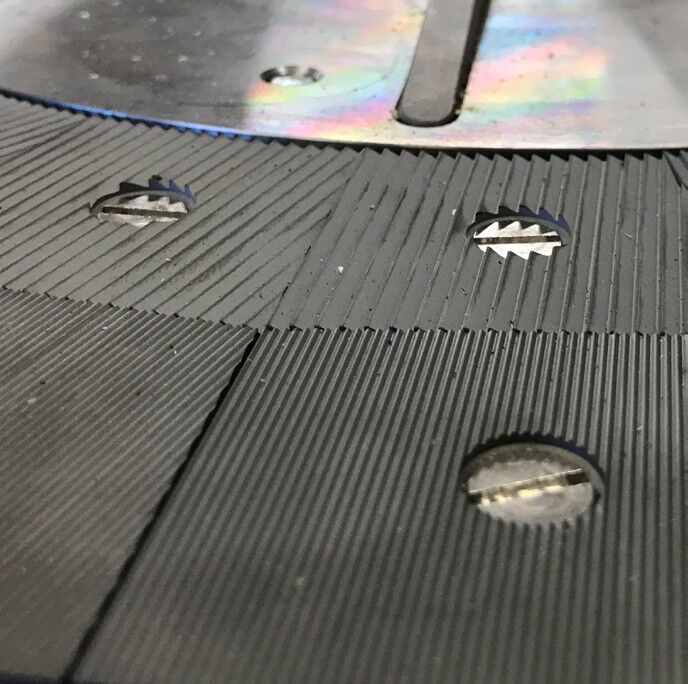Disc Mill Uses, Pros, and Cons
Benefits and drawbacks
Precision
One of the main advantages of modern disc mills is their high precision, which both improves product quality and reduces waste. Because material is being ground by discs rotating against each other, you can count on the product being ground down to a particular size and no more. For this reason, disc mills are commonly used for delicate compounds when you don’t want to over-mill it. The draw-back to this is that you cannot go from a large particle size to a small particle size because the discs must be a fixed distance apart. For applications that need significant particle-size reduction as well as high precision, two disc mills are used along with a sifter or screener. Initial product is fed into the first course-grind mill, the product is discharged into a sifter, and then the largest particles from the sifter (called overs) are fed into the fine-grind mill. The sifter can be skipped if throughput or high-precision is not a concern.
Disc mills are much more precise than hammer mills, which pound product through a perforated plate using very hard shafts of metal. Because this method is so traumatic to the product, hammer mills can achieve much more throughput for the price and size of unit.
Disc mills are equally precise as roller mills because the rollers are also placed a specific distance apart, but if product is spongy or sticky, a roller mill’s ability to grind it down will be limited.
Gentleness
Although precision itself contributes to how gente you can be with a disc mill, most of a disc mill’s gentleness is achieved by the grinder materials. Because the discs can be made of stone, they can create much less heat than other methods. Hammer mills generate significant heat which degrades many sensitive products, and disc mills produce even less heat than a roller mill. For this reason, stone disc mills are the primary method for milling grains, especially when it’s organic and quality is the unique benefit of the end product.
The drawback of disc mills’ gentleness is their throughput limitations. Though throughput will be higher when the grind is coarser, it will still be less than other mills.
Quiet
Another up-side to disc mills is that they are usually the quietest option for their applications—even quieter than roller mills because other components in the mill may rattle. Though sound may not seem like a big decision-point at first, processes can be very loud and any noise-savings are taken when possible—too much noise will frustrate communication, add to worker fatigue, and contribute to hearing loss.
Applications
Disc mills are best suited for processing dry, brittle, and granular materials like grains, minerals, plastics, and certain foods. They are not well-suited for very hard, fibrous, large, wet, or non-granular materials. When considering a disc mill, it’s important to understand both the material’s physical properties and the desired output size to ensure it’s the right choice, which is one of the values we add. So when in doubt, get in touch.
Great for:
- Grains & cereals from all types of cereal grains
- Flour from many kinds of grains like wheat, corn, oats, and barley
- Dehulling or grinding of grains like rice and sorghum
- Animal feed from ingredients like corn, soybean meal, alfalfa, and other grains
- Softer minerals like limestone, coal, and others used in cement production
Plastic resin and rubber pellets for recycling applications - Beans including cacao and coffee
- Spices like pepper and mustard
- Nuts, most commonly peanuts and almonds for butter
- Wood products, most commonly chips and sawdust
- Pharmaceuticals
- Herbal remedies
Bad for:
- Extremely hard or abrasive materials like metal, glass, ceramics (these will eat away at the discs); instead use hammer mills
- Extremely fibrous materials such as certain grass or wood products (these will clump up and interfere with grinding); also use hammer mills
- Large and wet materials like meat or fresh veggies (these will clog the disc’s grooves); instead use shredders
- Ultra-fine, or micronized powders (the discs are not able to get close enough); for these use air classifiers
Configurations
Disc mills are typically configured horizontally so that product remains in the milling area longer and more consistency is achieved. For applications where you’re not concerned so much with uniformity, like for spices, you can use a vertical disc mill. This allows you to get high throughput with a very small unit because gravity is pulling the product through the discs rather than having to be worked out. Disc mills can also be comprised of two discs, with one spinning against the other, or three discs with the middle one doing the grinding.
The evolution of the disc mill
The disc mill’s overall functionality has been largely unchanged over the last 100 years, but incremental changes have improved them slowly over time. Disc materials have improved for more longevity, groove patterns have been developed for more efficiency, motors and controls have become more energy efficient, casing developments have made them easier to work with, and of course now they all have ports for dust collection to keep the areas clean.
To see our more popular disc mills, go here.
